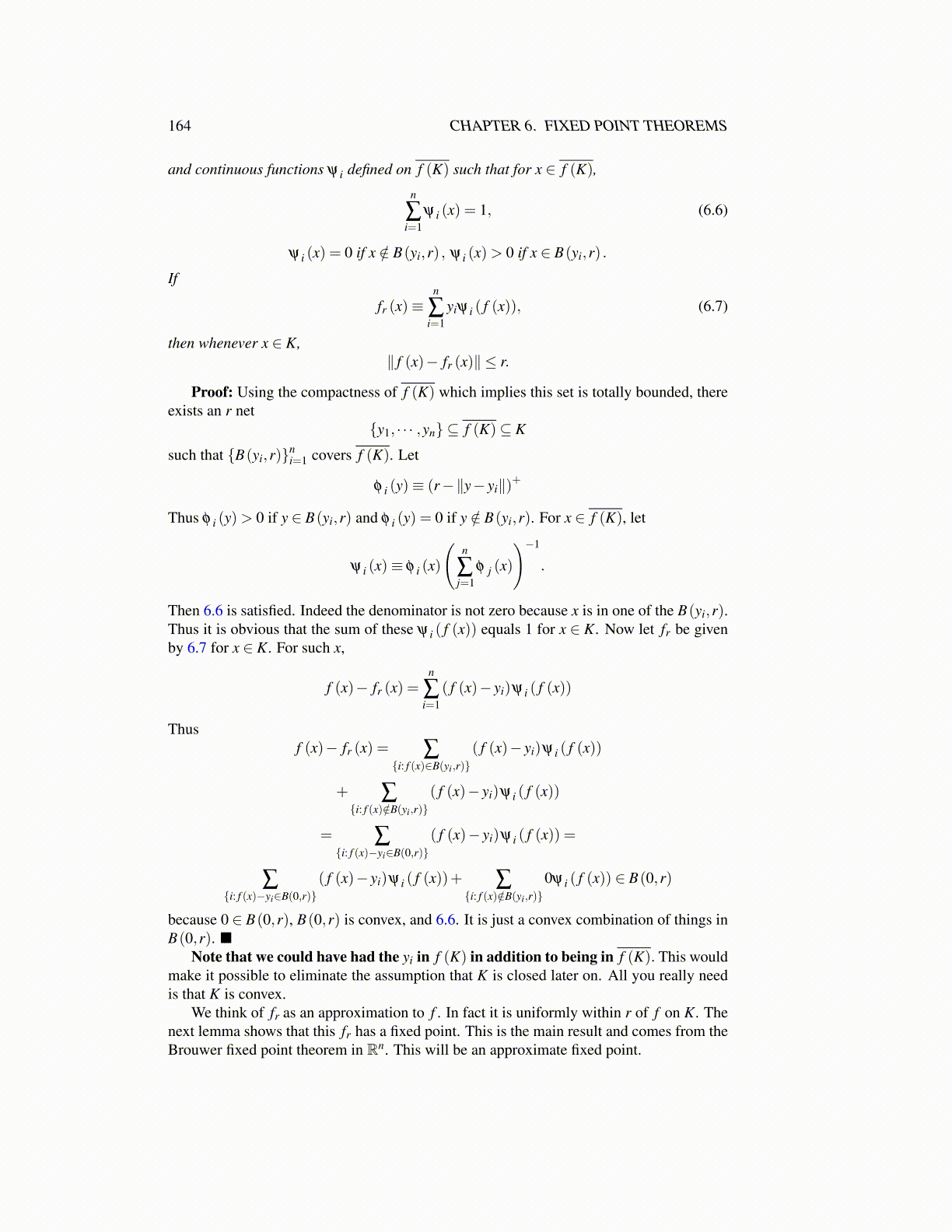
164 CHAPTER 6. FIXED POINT THEOREMS
and continuous functions ψ i defined on f (K) such that for x ∈ f (K),
n
∑i=1
ψ i (x) = 1, (6.6)
ψ i (x) = 0 if x /∈ B(yi,r) , ψ i (x)> 0 if x ∈ B(yi,r) .
If
fr (x)≡n
∑i=1
yiψ i ( f (x)), (6.7)
then whenever x ∈ K,∥ f (x)− fr (x)∥ ≤ r.
Proof: Using the compactness of f (K) which implies this set is totally bounded, thereexists an r net
{y1, · · · ,yn} ⊆ f (K)⊆ K
such that {B(yi,r)}ni=1 covers f (K). Let
φ i (y)≡ (r−∥y− yi∥)+
Thus φ i (y)> 0 if y ∈ B(yi,r) and φ i (y) = 0 if y /∈ B(yi,r). For x ∈ f (K), let
ψ i (x)≡ φ i (x)
(n
∑j=1
φ j (x)
)−1
.
Then 6.6 is satisfied. Indeed the denominator is not zero because x is in one of the B(yi,r).Thus it is obvious that the sum of these ψ i ( f (x)) equals 1 for x ∈ K. Now let fr be givenby 6.7 for x ∈ K. For such x,
f (x)− fr (x) =n
∑i=1
( f (x)− yi)ψ i ( f (x))
Thusf (x)− fr (x) = ∑
{i: f (x)∈B(yi,r)}( f (x)− yi)ψ i ( f (x))
+ ∑{i: f (x)/∈B(yi,r)}
( f (x)− yi)ψ i ( f (x))
= ∑{i: f (x)−yi∈B(0,r)}
( f (x)− yi)ψ i ( f (x)) =
∑{i: f (x)−yi∈B(0,r)}
( f (x)− yi)ψ i ( f (x))+ ∑{i: f (x)/∈B(yi,r)}
0ψ i ( f (x)) ∈ B(0,r)
because 0 ∈ B(0,r), B(0,r) is convex, and 6.6. It is just a convex combination of things inB(0,r). ■
Note that we could have had the yi in f (K) in addition to being in f (K). This wouldmake it possible to eliminate the assumption that K is closed later on. All you really needis that K is convex.
We think of fr as an approximation to f . In fact it is uniformly within r of f on K. Thenext lemma shows that this fr has a fixed point. This is the main result and comes from theBrouwer fixed point theorem in Rn. This will be an approximate fixed point.